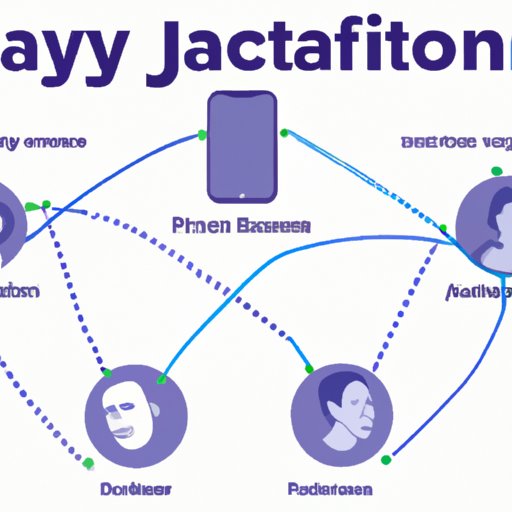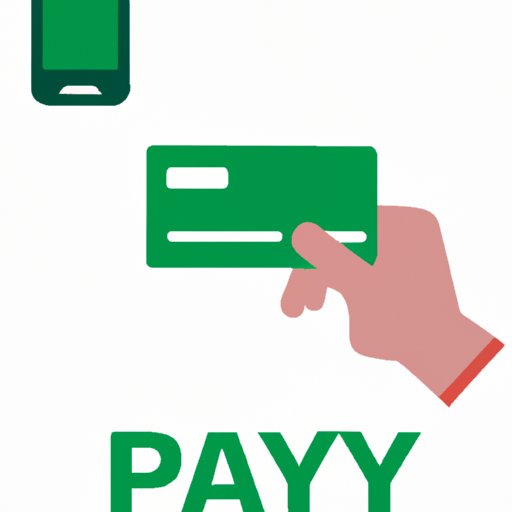Introduction
JPay is a service that provides electronic payments and communication tools for people who are incarcerated in state and federal prisons. The platform was created to make it easier for inmates, their families, and friends to connect and stay in touch. Through the use of JPay’s services, inmates can receive money, send emails, and purchase items from the commissary.
A Step-by-Step Guide to Using JPay
Using JPay can be relatively easy once you understand the process. Here is a step-by-step guide to getting started with JPay:
Setting up an Account
The first step to using JPay is to set up an account. You can create an account on the JPay website or by downloading the app for Android or iOS devices. Once you have created your account, you will need to provide information about the inmate you wish to communicate with. This includes their name, ID number, and facility name.
Exploring the Features of JPay
Once your account is set up, you can explore the features of JPay. This includes sending emails, attaching photos and videos, purchasing items from the commissary, and sending money to an inmate’s account. You can also access other services such as video visitation and telephone services.
Sending Funds to an Inmate’s Account
One of the most popular features of JPay is the ability to send funds to an inmate’s account. This can be done through the website or app. To send funds, you will need to provide the inmate’s name, ID number, and facility name. You will then need to enter the amount of money you wish to send and choose a payment method.
An Overview of the Features and Benefits of JPay
JPay offers many features and benefits that make it an attractive option for inmates and their families. Here is an overview of some of the features and benefits of using JPay:
Connecting Inmates with Their Loved Ones
One of the main benefits of using JPay is that it allows inmates to stay connected with their loved ones. With JPay, inmates can send emails, attach photos and videos, and purchase items from the commissary. This helps inmates feel less isolated while they are incarcerated and makes it easier for them to maintain relationships with their family and friends.
Cost of Using JPay Services
Another benefit of using JPay is that it is relatively affordable. There are fees associated with sending funds and other services, but these are typically much lower than traditional methods of sending money or communicating with inmates.

Exploring How JPay Connects Inmates with Their Loved Ones
JPay makes it possible for inmates to stay connected with their loved ones in a variety of ways. Here are some of the ways inmates can communicate with their family and friends:
Different Ways to Communicate
Inmates can send emails, attach photos and videos, and purchase items from the commissary. They can also access video visitation and telephone services. All of these services are available through the JPay website or app.
Services Provided to Inmates
In addition to providing communication services, JPay also offers educational resources and entertainment options to inmates. These include books, music, games, and language learning tools.

Understanding the Cost of Using JPay Services
JPay does charge fees for certain services. Here is an overview of the fees associated with using JPay:
Fees Associated with Sending Funds
When sending funds to an inmate’s account, there is usually a fee associated with the transaction. This fee is typically a percentage of the total amount being sent. For example, if you are sending $100, you may be charged a fee of $5.
Other Fees and Costs
In addition to fees associated with sending funds, there may also be other fees and costs associated with using JPay. This includes fees for phone calls, video visits, and other services. It is important to understand these fees before using any of the services offered by JPay.
How to Use JPay to Send Funds to an Inmate’s Account
Sending funds to an inmate’s account is one of the most popular features of JPay. Here is a step-by-step guide to sending funds to an inmate’s account:
Steps Involved in Sending Funds
To send funds to an inmate’s account, you will need to provide the inmate’s name, ID number, and facility name. You will then need to enter the amount of money you wish to send and choose a payment method. Payment methods may include credit/debit card, eCheck, or bank transfer.
Types of Payment Accepted
JPay accepts a variety of payment methods, including credit/debit cards, eChecks, and bank transfers. It is important to note that not all payment methods are accepted at all facilities, so it is important to check with the facility before sending funds.
An Overview of JPay’s Security Measures for Transactions
JPay takes security very seriously and has several measures in place to ensure the safety of its users. Here is an overview of the security measures used by JPay:
Encryption and Other Methods Used to Protect Data
JPay uses encryption and other methods to protect data. This includes secure sockets layer (SSL) technology and two-factor authentication. These measures help to ensure that user data is kept safe and secure.
Use of Third-Party Services
JPay also uses third-party services to protect data. These services include VeriSign and Trustwave, which help to ensure that user data is kept safe and secure.
Conclusion
JPay is a service that provides electronic payments and communication tools for people who are incarcerated in state and federal prisons. It offers many features and benefits, including the ability to send funds to an inmate’s account, connect inmates with their loved ones, and access educational resources and entertainment options. JPay also takes security very seriously and utilizes encryption and other methods to protect user data.
Overall, JPay is a useful and convenient service that can help inmates stay connected with their loved ones while they are incarcerated. It is an affordable and secure way to send funds and communicate with inmates.
(Note: Is this article not meeting your expectations? Do you have knowledge or insights to share? Unlock new opportunities and expand your reach by joining our authors team. Click Registration to join us and share your expertise with our readers.)
